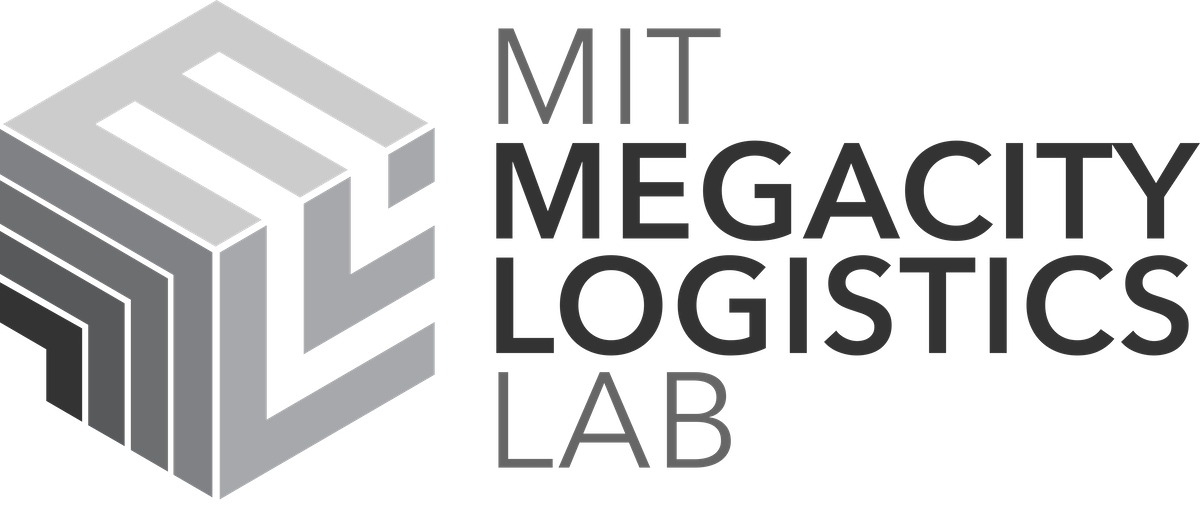The MIT Megacity Logistics Lab conducts innovative theoretical and applied research to help companies operate better logistics for cities and governments to design better cities for logistics.
Why a Megacity Logistics Lab?
Designing urban logistics operations requires in-depth understanding of consumers and channels combined with high-resolution, data-driven modeling. There are three major drivers of increased complexity of urban logistics networks.
First, urbanization is progressing at a fast pace. While in 1950 only 54.5% of the population in developed countries lived in urban areas, this number had risen to 77.7% by 2011 and is projected to reach 85.9% by 2050. Moreover, 25% of the world’s population and almost 60% of the world’s gross domestic product will be found in the world’s 600 largest cities by 2025.
Second, the growth of Internet and mobile phone based electronic commerce is triggering an increasing amount of direct shipments from manufacturers and retailers to individuals. Direct deliveries do not only increase complexity of last-mile urban transportation networks, they also lead to fragmentation of shipments and higher complexity and greater need for coordination between consumers, retailers and manufacturers to distribute goods efficiently.
Finally, on-going efforts from cities to invest in public transportation, limiting road access and parking spaces in favor of pedestrian and public transit infrastructure, disproportionally impact logistics operations. Since urban freight also generates an important share of congestion, pollution and other negative externalities, city logistics activities are always under pressure from regulatory actions.
Urban Logistics Toolkit and Best Practices
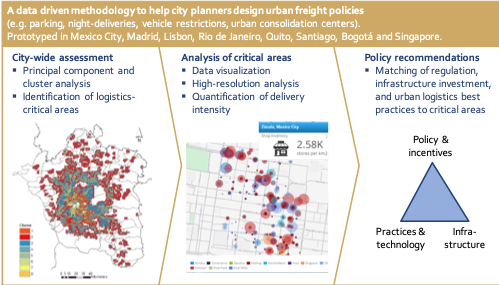
The growth of e-commerce is pushing the limits of existing logistics network designs. We are reimagining future urban logistics networks that support omni-channel retail models, smaller store formats, increased intensity of deliveries, coordinate multiple transshipment points, and engage a wider range of vehicle technologies – including cargo bikes, electric and autonomous vehicles. We are developing a toolkit for the city-wide identification and analysis of logistics-critical areas and how they can be matched with suitable urban freight policies, operational best practices, and infrastructure improvements. The toolkit is being prototyped in seven cities: Mexico City, Madrid, Lisbon, Rio de Janeiro, Santiago, Bogotá and Singapore.
Urban Distribution Network Design
Cities are growing in both size and complexity, especially in developing economies. In an effort to curb traffic congestion and pollution levels, local governments are restricting the movement of commercial vehicles in city centers. At the same time, urbanization leads to a continuous increase in the demand for goods to be delivered to inner city areas. The explosive growth of e-commerce is changing consumer buying preferences, and disrupting traditional, truck-based delivery services. In the near future, improving technology will only add to the demand for delivery in densely-packed city centers, as more and more vendors are investing in mobile commerce and omni-channel retail strategies. These changes put a premium on innovative distribution models and optimally designed last-mile distribution networks that are efficient, flexible, and resilient. The new emphasis is on multi-tier systems that leverage the concept of transshipment and employ different combinations of transportation modes and technologies. We support companies in designing such networks, understanding their performance trade-offs, and implementing innovative delivery models with the help of mathematical network optimization and simulation models.
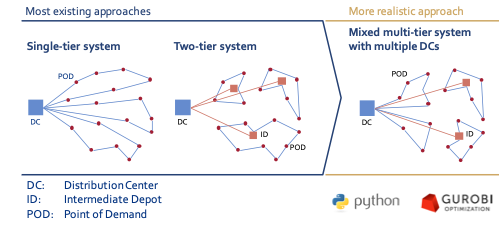
Urban Logistics Big Data Analytics
Companies collect tens of thousands of data points every day from a variety of systems and sensors in their logistics operations. Often, this data is archived and not used to improve or redesign their last-mile activities. Leveraging recent advances in data analytics, mobile computing and low-cost sensor technology we are developing and prototyping new algorithms that process GPS and cellphone traces to extract information on congestion, stop times, and route choices. Our data analytics tools create high-resolution visibility of companies’ last-mile delivery processes and performance. Especially if we combine geospatial with transactional datasets, our tools enable companies to extract value from their data by learning from it to improve the strategic design, operational planning, and daily execution of their last-mile operations.
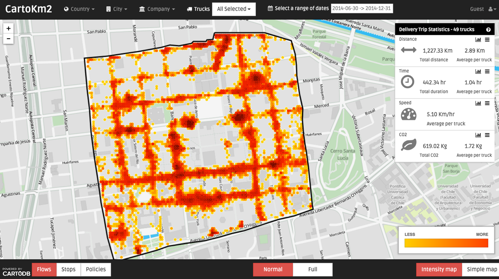
New Urban Mobility Technologies
Emerging technologies such as autonomous vehicles, drones, 3D printing, or the Internet-of-Things may disrupt urban last-mile logistics in the near future. We strive to determine the optimal integration of such technologies in the design, planning, and operation of urban distribution systems and study their impact on urban logistics performance.
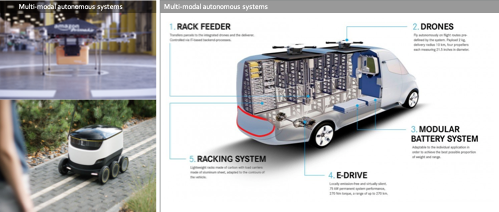
Engage with Us
Please contact Dr. Matthias Winkenbach (mwinkenb@mit.edu) for more information. We are looking for industry or government partners to engage with us on:
- City-Level GPS, telemetry, sensor, and/or transactional datasets for analysis and algorithm development.
- Case studies to design future last-mile delivery networks in large urban areas, optimize their performance in terms of cost, service level, CO2 footprint, etc.
- Case studies to develop interactive decision support tools to simulate and visualize delivery network performance under uncertainty of demand, traffic, etc.
- Experiments to pilot and evaluate urban freight technologies, policies and practices.
- Funding for open source tool development.
